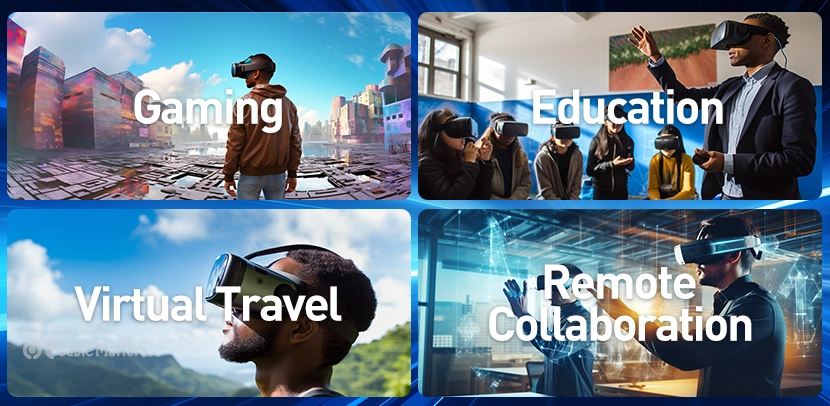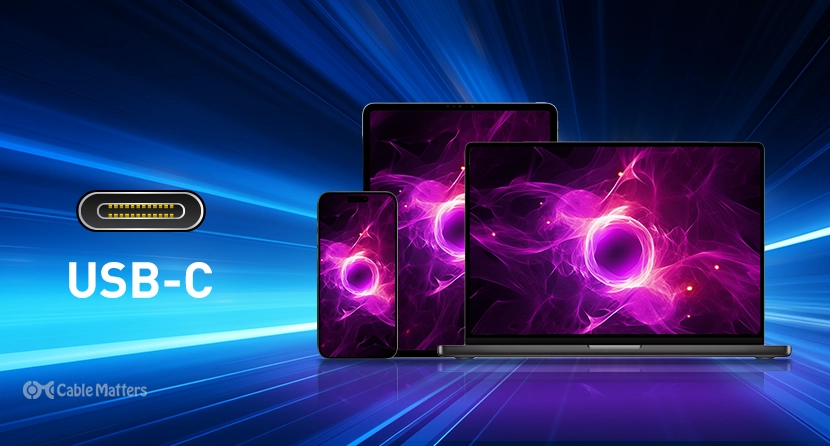
2023 has been an incredible year for technology, with major leaps made in some exciting industries opening up new ways to work, play, and experience the world. With so much of the past few years being taken up by pandemic measures and the fallout from them, 2023 is the first year that’s really seen the world open up again and it did so in dramatic fashion.
The 2023 technology trends have been rushing ahead apace, with amazing advances in artificial intelligence, a next-generation of virtual reality and augmented reality devices, and we’ve seen new and advanced generations of cables, like USB4 and Thunderbolt 4. There’s even been a Thunderbolt 5 announcement, which promises faster data transfers and higher resolution display support than ever before.
As we enter the last few months of the year, let’s take a look back at how far we’ve come to discover some of the best 2023 technology trends.
Artificial Intelligence
Artificial intelligence, or AI, has been one of the most exciting electronic trends for the past decade, but it exploded into the mainstream in 2023. After a steady build-up of excitement after ChatGPT’s launch in November 2022, it took a major leap into the mainstream consciousness in the early months of the year. Microsoft not only announced a massive investment in OpenAI and its underlying language model technologies but also brought it to its Bing search engine in the form of Bing Chat.
Google followed with its Bard search engine assistant, and other major tech companies like Baidu and Meta began work on their own large language model AIs. Microsoft has since added AI to Windows 11 through CoPilot, and Google Duet is set to help out anyone who wants to use Google’s online Office-like services.
Natural language model chatbots aren’t the only AI that become more mainstream in 2023, though. Art-generating AIs have continued to improve, with the latest generation Dall-E 3, Midjourney, and the latest version of NightCafe all producing ever more realistic, ever more accurate images based on the prompts of their users. We’ve also seen the launch of AI tools for assisting in restoring and cleaning up old pictures, and Photoshop now has a generative AI feature which is brilliant at removing backgrounds and generating new image content on the fly.
AI is suddenly everywhere, and it’s been a little scary for some. Artists, authors, copywriters, and voice actors are all concerned that their livelihood may be under threat from these new AI tools. While it seems likely that eventually many jobs will be made redundant by continued AI development, the 2023 technology trend is that workers with AI are going to replace workers without AI.
After that, who knows?
This has prompted governments around the world to begin the process of legislating against AI practices and development. The EU has begun banning the use of AI systems that are manipulative, or exploitative, while the U.S., has issued several executive orders and draft bills to investigate and potentially curtail harmful elements of AI. Other countries are in the process of enacting their own laws, though some are looking to encourage AI development since it’s likely to be a major growth industry over the next decade.
From a business perspective, companies will need to consider how they want to utilize AI in their workforce moving forward. Many larger enterprises may have an interest in running their own AI solution in-house. That maintains greater privacy for their data, but setting it up could be costly, as the CPUs and GPUs to power AI can cost tens, or even hundreds of thousands of dollars to get up and running.
VR/AR Continue to Make Waves
Virtual and augmented reality headsets and technologies have been an exciting electronic trend for almost a decade, but the slow push towards mainstream adoption continued in 2023 with the announcement of several very exciting hardware and software solutions that are available now, and coming in the near future.

Arguably the most important launch of the year was the Meta Quest 3. It’s the next generation of Meta/Oculus mainstream Quest headsets and a light step down from the Meta Quest Pro. The Quest 3 is a $500 headset with faster processing, better battery life, and improved ergonomics over the super-popular Quest 2 design.
With support for PC-VR through the Quest Link (though any high-quality USB4 cable will do), it’s likely to be the most popular virtual reality headset before too long – although overtaking the Quest 2 might take some time.
Elsewhere Meta launched a line of augmented reality sunglasses in partnership with Ray-Ban. These offer hands-free access to social media and have the ability to take and record photos, videos, and audio. Meta’s Metaverse ideal is still seeing some development, though mostly with Meta pursuing new generations of hardware. Its Horizon Worlds project has been relegated to a backseat and may not see much further development.
Apple made a big splash this year with the announcement of its high-end Apple Vision Pro headset, which is designed to offer both VR and AR experiences and will launch in 2024. Apple positions it as a productivity booster, and a way for people to really blend the real world and digital world for both work and relaxation in something Apple is calling “Spatial computing.”
The jury’s still out on whether a $3,500 headset can truly go mainstream, but it is an impressive piece of kit. Apple has since announced a cut-down version of the Vision Pro will be launched after, likely without some of the more advanced features like the outward-facing display, though the price will be around $2,000, so it still won’t be cheap.
Console gamers got a new headset this year in the form of the PlayStation VR2. With its OLED displays and increased field of view, it offers a much improved VR experience over its predecessor, the PlayStation 4. It’s an expensive extra, but until we see Microsoft or Nintendo push for a VR solution on their console platforms, the PSVR2 is likely to be the best console VR headset for some time to come.
USB-C Finally Becomes Mainstream
USB-C was a godsend when it was first introduced, heralding an end to the exhaustive USB-A problem of always seeming to plug it in the wrong way. At least three times. However, while USB-C has seen increased adoption in recent years, some holdouts continued to use older or other technologies, holding it back from being the universal, reversible cable solution we all know and love.
In 2023, Apple finally caved, after years of fighting to hold on to its bespoke Lightning charge port on iPhones. With an EU ruling that all devices sold on the continent would require USB-C, Apple has relented and the latest iPhone 15 models all come with USB-C ports.
This latest generation of iPhone joins Apple’s iPads and MacBooks in offering USB-C as the primary connection option. Although many modern devices still offer USB-A as a legacy option, most now have an array of USB-C ports in various configurations.

There are USB 3.2 Gen 2x2, USB4, and Thunderbolt 3 and 4 ports all now using USB-C.
While there are still a lot of different USB-C connector options out there, with an agreement on a universal cable and port design, we might finally begin to see greater unification in the years to come.
Cable Technology Advances: Better, Faster, and Powerful
Along with seeing more USB-C cables in modern devices, modern cables are themselves becoming faster and more capable all the time too.
We saw the launch of DisplayPort 2.1 in 2022, and that rollout has continued throughout 2023, with more and more gamers buying AMD’s RX 7000 series of graphics cards. Next-generation GPUs from both AMD and Nvidia are expected to offer DisplayPort 2.1 ports, as well as the ever-popular HDMI 2.1.
Following the launch of Thunderbolt 4 in 2020, Intel announced its successor this year: Thunderbolt 5. Set to debut in 2024, the new technology will enhance the available bandwidth to up to 120 Gbps – three times that of the fastest Thunderbolt 4 cables – and offer support for up to 10K resolution video, and 240W USB power delivery for even faster charging of larger devices.
Watch this space for the first releases. Cable Matters is on track to launch our first Thunderbolt 5 cable in 2024.
Conclusion
The year to date has been an exciting one for all kinds of technology, from new generations of AR and VR headsets to new cables, to new networking trends. AI is everywhere, and the latest cables have the bandwidth to deliver previously impossible standards of data and video.
Better yet, 2024 is shaping up to be just as exciting. Thunderbolt 5 and DisplayPort 2.1 will dominate, and if you need either of those cables (or anything else besides) you know where you can get high-quality versions of them: Right here, at Cable Matters.